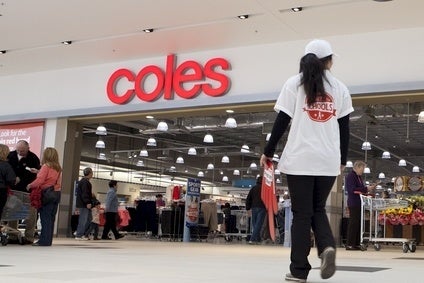
Australia’s headline inflation rate has reached a multi-decade high, with fruit and vegetables prices leading the charge in food and grocery.
Inflation accelerated to an annualised rate of 7.3% in the quarter through September, the fastest pace since 1990, and up from 6.1% in the three months ended in June, according to the Australian Bureau of Statistics. On a quarter-on-quarter basis, the consumer price index rose 1.8%, matching the previous increase.
Australia’s food and non-alcoholic drinks sectors lagged only housing and transport costs, rising 9% from a year earlier and up 3.2% quarter-on-quarter.
“Strong price rises were seen across all food and non-food grocery products in the September quarter,” the Bureau said today (26 October). “These increases reflected a range of price pressures, including supply-chain disruptions, weather-related events, such as flooding, and increased transport and input costs.”
Fruit and vegetables prices rose 16.2% over the 12-month comparative period and dairy products increased 12.1%. Bread and cereals climbed 10%, ranking third in the grocery products segment. Non-acholic beverages were up 9.3%.
Australia is not unique in the factors influencing food prices in particular, with most of the globe experiencing the same inflation pressures. In the case of Europe, however, an unusually hot summer characterised the weather component. But the rising price of gas and fuels is a key area of concern for the impact on household food and discretionary spending and business’ operational costs. The prospect of recessions and higher interest rates to combat inflation are also a hanging restraint for business investment and borrowing.

US Tariffs are shifting - will you react or anticipate?
Don’t let policy changes catch you off guard. Stay proactive with real-time data and expert analysis.
By GlobalDataIn Australia, the price of gas and other household fuels rose 10.9%.
Food inflation up nearly 7% in Singapore
Singapore reported a similar headline rate of annualised inflation yesterday to that of Australia. Prices rose 7.5% in September, the fastest since 2008, and matching the increase in August. Food inflation was 6.9%, up from 6.4% in the previous month.
“Globally, demand conditions in major economies have softened, while supply-chain frictions have continued to ease. Prices of energy and food commodities have come off their peaks from earlier in the year but remain high given ongoing supply constraints,” Singapore’s Ministry of Trade and Industry said.
“In addition, labour markets in major advanced economies are still tight, keeping wage pressures strong. Accordingly, across a range of goods and services, Singapore’s imported inflation is expected to remain significant for some time.”
Australia and Singapore have yet to see the double-digit food inflation hitting advanced economies in Europe.
Food and non-alcoholic beverages inflation in the UK reached 14.5% last month – a level not seen since 1980 – and described by an industry body as a “grim milestone”.
Ireland is experiencing surging costs for staples like butter milk and bread, while Germany recently reported a 20% food inflation rate, the worst in three decades.



